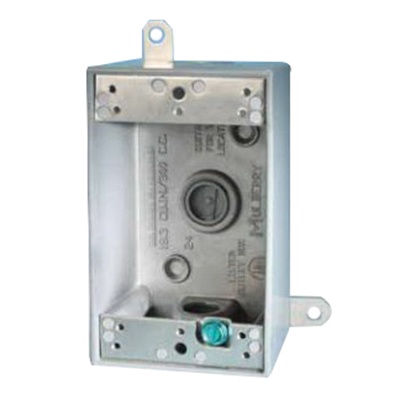mbrooke
Batteries Included
- Location
- United States
- Occupation
- Technician
If a device is self grounding, do you still need to bond to the metallic box assuming the ground is terminated on the device?
If a device is self grounding, do you still need to bond to the metallic box assuming the ground is terminated on the device?
I learned something new today. My thinking has always been along the line of Paul's, but code got me asking. Hope it doesn't change.
Remember that hopefully you will remove any plugs from the receptacle before removing it from the box. So at that point the ground is not doing anything.
-Hal
Remember that hopefully you will remove any plugs from the receptacle before removing it from the box. So at that point the ground is not doing anything.
-Hal
I agree- but nothing forbids the other way around, correct?
Perhaps a 2023 code change?I agree- but nothing forbids the other way around, correct?
..You can also, in many cases, remove one of the washers on the mounting screws and not use the jumper.
Just because permits with inspections regularly pass re-modelers, rope pullers, and general contractors that fire any helper using device-grounding terminals, KO seals, or who pull drywall rocks from boxes, does not mean it will pass an insurance claim.
If device is not self bonding, violating the device listing or 110.3(B) gives freebees to the insurance industry, who find listing violations as cause for denying casualty claims.

What specifically requires an FS style box?
FS boxes are not the only limitation when it comes to "surface mounted".
I almost never use a bonding jumper to devices on other types of metallic surface mounted boxes, even cover mounted devices can be bonded through the cover if the cover is of a type allowed to do so. (typical 4x4 raised cover)
I agree that's true but that is not what Bill was referencing, he specifically mentioned removing the insulating washer from behind the 6-32 mounting screw for the purpose of metal to metal contact between the box and the yoke. That wouldn't really apply to cover mounted boxes.
Besides FS and variants of that type of box what other types of surface mounted boxes are you thinking about?

